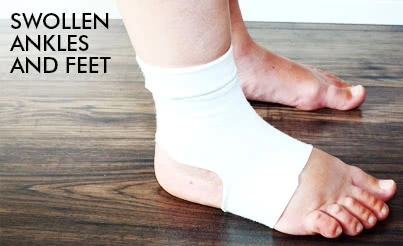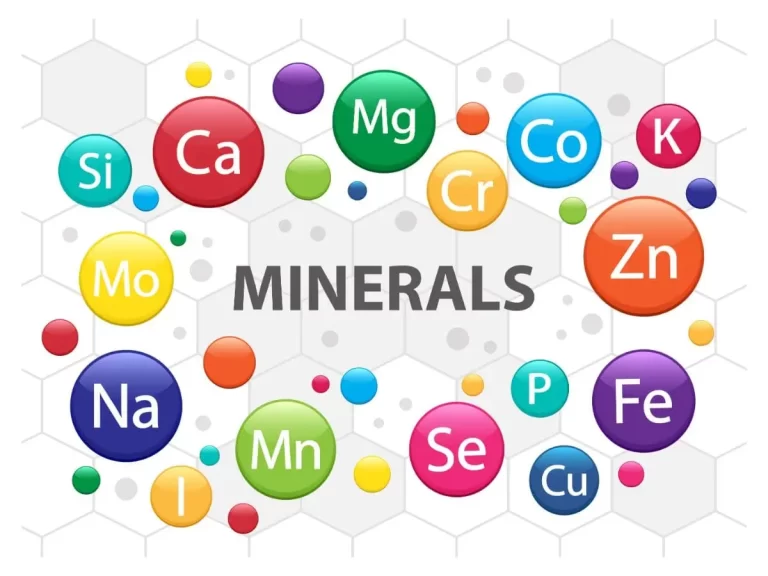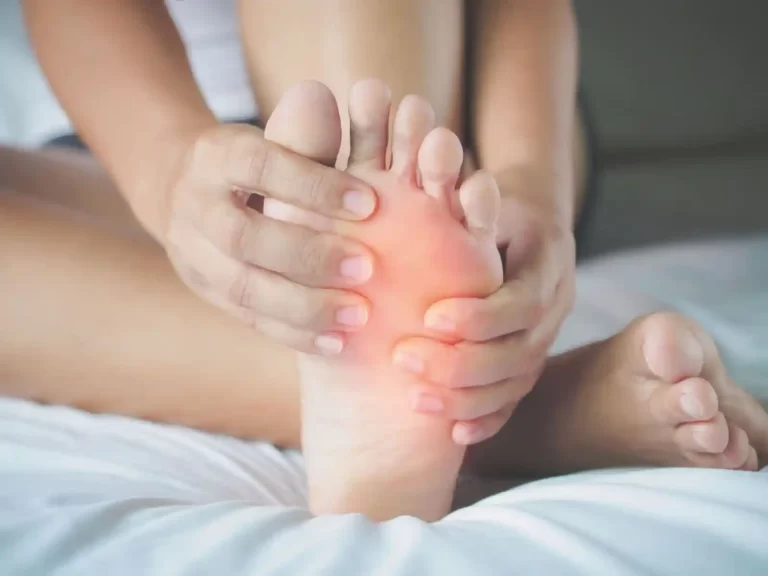Swollen Ankles and Feet: Causes, Symptoms, and Relief Tips
Swollen ankles and feet, medically known as peripheral edema, are a common condition characterized by the accumulation of excess fluid in the lower extremities. This swelling often results from an imbalance in the body’s fluid regulation, leading to fluid retention in the tissues. Various factors can contribute to swollen ankles and feet, including underlying health conditions, lifestyle choices, and environmental factors.
While occasional mild swelling may be benign, persistent or severe edema can be indicative of an underlying medical issue that requires attention. Understanding the potential causes, symptoms, and risk factors associated with swollen ankles and feet is crucial for proper diagnosis and effective management of this condition.
Introduction
Standing a lot causes your legs and feet to swell because gravity pulls blood into the veins, where some of the blood’s water content enters. But since they alter how fluids circulate throughout the body, several illnesses might result in swelling akin to this. A different name for swelling in the feet, legs, and ankles is peripheral edema, which is the collection of fluid in these body parts. Generally speaking, fluid accumulation is not uncomfortable unless it results from an injury. Because of gravity, swelling is frequently more noticeable in the lower parts of the body.
The most common age group for foot, leg, and ankle swelling is elderly individuals. It is possible for the swelling to appear on one or both sides of the body. The lower body may be impacted in one or more places. While there is usually no serious health risk associated with swelling in the ankle, calf, or foot, it’s still vital to know when to consult a doctor. There are situations when swelling points to a more serious underlying medical condition that requires immediate attention.
Symptoms
- Stretched or shiny skin
- Difficulty walking
- Pain
- Skin that is warm to the touch
- Skin redness or discoloration
- Reduced function
The common cause for the foot and ankle swelling is described below:
Edema
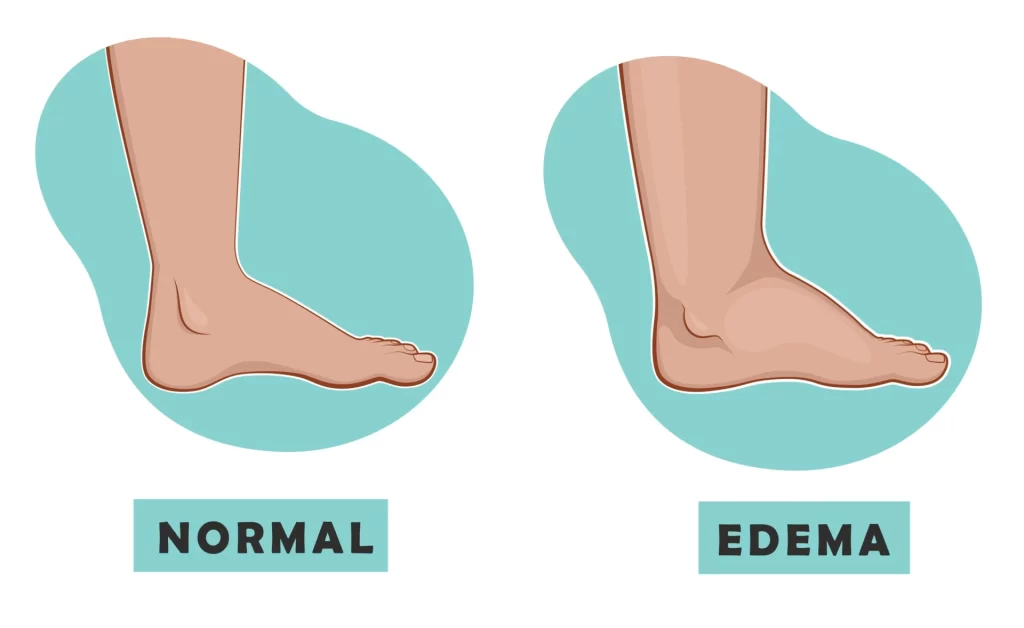
This happens when your body carries too much water. It can make your feet swollen as well as your hands and face. You might see it after a long airplane flight or if you stand for hours at a time, and some women have it around their menstruation. It usually goes away on its own, but occasionally it can be a sign of a health issue like low protein levels, heart failure, or kidney or liver disorder.
Pregnancy complications
It’s common for the ankles and feet to swell slightly during pregnancy. On the other hand, abrupt or severe swelling could indicate preeclampsia, a dangerous condition in which high blood pressure and urine protein appear after the 20th week of pregnancy. Make an appointment with your doctor right away if you suffer from severe edema or swelling that is combined with other symptoms including headaches, nausea, vomiting, infrequent urination, or changes in your vision. Study up on managing a pregnancy that has a high risk.
Foot or ankle injury

Swelling can occur from an ankle or foot injury. The most frequent is a sprained ankle, which happens when the ligaments holding the ankle in place are stretched beyond the extent that should be due to an accident or slip.
When you have an injury to your foot or ankle, you can use ice packs, elevate the foot on a stool or pillow, rest to prevent walking on the affected area, and wrap the area in compression bandages. See your doctor if the pain and swelling are severe or if home remedies don’t work.
Lymphedema

This is an increase in lymphatic fluid within the tissues that may arise from the removal of lymph nodes, difficulties with the lymph veins, or both. Rich in proteins, lymph generally flows through an extensive system of capillaries and arteries.
The lymph nodes, which capture and remove harmful substances like bacteria, cleanse it. However, the circulation of the fluid may be obstructed in the case of a vascular or lymph node issue. If left untreated, lymph accumulation can cause infection, and deformity, and hinder the healing of wounds. Following radiation therapy or lymph node dissection, cancer patients frequently get lymphedema. See your doctor as soon as possible if you have edema after receiving cancer therapy.
Venous insufficiency
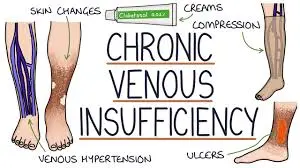
Ankle and foot swelling is frequently an early stage of venous insufficiency, a disorder in which blood does not circulate enough up the veins from the legs and feet to the heart. Normally, one-way valves in the veins maintain blood flow upward. Blood flows back down the vessels when these valves weaken or break, retaining fluid in the soft tissues of the lower limbs, particularly the ankles and feet. Skin alterations, ulcers, and infections can result from chronic venous insufficiency. See a physician if you develop symptoms of venous insufficiency.
Infection
An infection may be indicated by swelling in the ankles and feet. Foot infections are more common in those with diabetic neuropathy and other nerve disorders of the feet. It’s crucial to check your feet every day for blisters and sores if you have diabetes because nerve damage can make it difficult to feel pain and because foot issues can worsen rapidly. Contact your doctor immediately if you see a blister or swollen foot that seems to be infected.
Blood clot
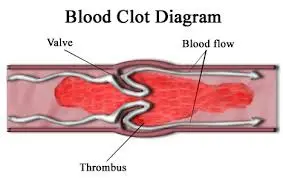
Ankle and foot edema can result from blood clots that develop in the leg veins, obstructing the blood’s natural flow back to the heart. Both superficial and deep blood clots—which are found in the veins just below the skin—are possible (a disease known as deep vein thrombosis).
A deep clot may obstruct one or more of the leg’s main veins. If these blood clots break free and go to the heart or lungs, they could be fatal. Contact your doctor right away if you experience pain, low-grade fever, swelling in one leg, and potentially even a change in the color of the affected leg. Blood thinner therapy can be required.
Heart Failure
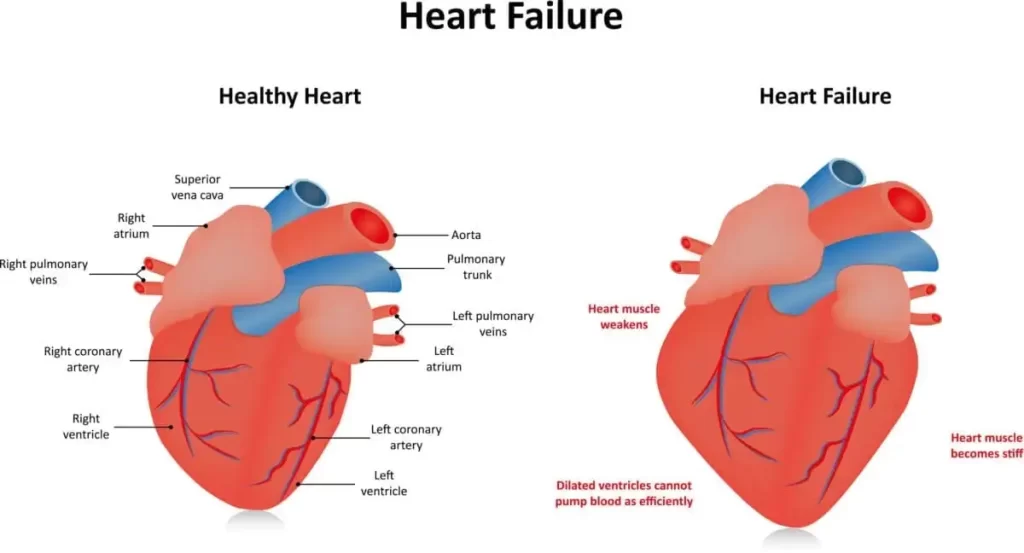
This is the condition in which your heart fails to pump blood properly. Swelling may result from blood that isn’t moving properly through your legs and feet. Lying flat on your back might be uncomfortable if you have heart failure.
Your heart may also beat more quickly or irregularly, making it difficult for you to breathe. If you observe these symptoms, get medical attention quickly.
Kidney Disease
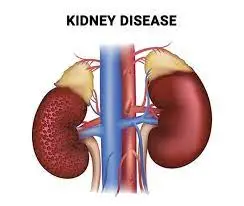
The kidneys remove waste products from your blood. A disorder like diabetes or high blood pressure might cause them to malfunction, leaving your blood with an excess of salt (sodium).
Your body stores more water as a result of that than it should. The water is drawn downward by gravity, causing your ankles and feet to swell.
Liver Disease
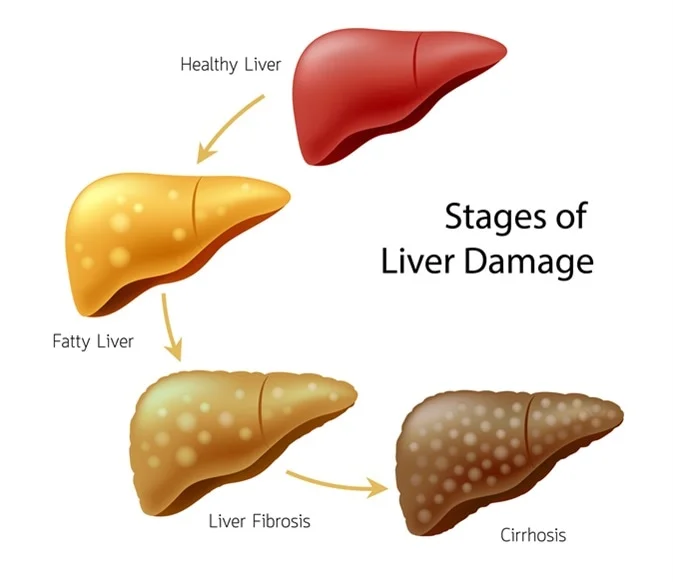
Your liver must constantly heal itself if you have hepatitis, which is an inflammation of the liver, or if you drink excessively. Your liver might stop functioning normally as a result, and scar tissue may start to replace healthy tissue. In that case, your feet, legs, and abdomen may expand due to an accumulation of fluid.
Arthritis
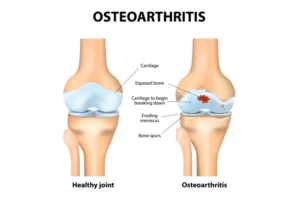
Ankle and foot swelling can be caused by arthritis or joint inflammation. An arthritis that is frequent and can occasionally produce swelling is osteoarthritis. Usually, just one joint experiences it.
Another type of arthritis known to cause excruciating pain and swelling in the joint is gout. Though gout can also affect the ankle or other foot joints, the big toe is the most commonly affected.
Ankle and foot swelling and arthritis are symptoms of certain autoimmune disorders. Among these are:
- Rheumatoid arthritis
- Psoriatic arthritis
- Lupus
- Reactive arthritis
The immune system targets healthy tissues in each of these disorders, resulting in discomfort, inflammation, and destruction. A bacterial infection in an arthritic joint causes septic arthritis, which frequently affects individuals with
- Implanted medical devices (joint replacements)
- A condition like gout increases the chance of chronic joint injury
- Immune system affected, such as human immunodeficiency virus (HIV)
The majority of cases of septic arthritis occur in elderly people and youngsters. It may impact one ankle alone or more broadly throughout the body. Septic arthritis needs to be treated very often since it might be fatal.
Medication side effects
Ankle and foot swelling is a common adverse effect of several medications. Among them are:
- Hormones like testosterone and estrogen (found in hormone replacement therapy and oral contraceptives)
- Nifedipine (Adalat, Afeditab, Nifediac, Nifedical, Procardia), amlodipine (Norvasc), diltiazem (Cardizem, Cartia, Dilacor, Diltia, Tiazac), felodipine (Plendil), and verapamil (Calan, Covera-HS, Isoptin, Isoptin SR, Verelan) are examples of calcium channel blockers, a class of blood pressure medication.
- drugs, such as corticosteroids like prednisone and androgenic and anabolic steroids
- Antidepressants, such as monoamine oxidase (MAO) inhibitors like phenelzine (Nardil) and tranylcypromine (Parnate), and tricyclics like desipramine (Norpramin), amitriptyline (Elavil, Endep, Vanatrip), and nortriptyline (Pamelor, Aventyl)
- Non-steroidal anti-inflammatory drugs (NSAIDs)
- Diabetes medications.
Consult your doctor if you think that a medication you are taking may be affecting your swelling. More severe swelling may need changing the prescription or dosage, even though the drug’s advantages might outweigh the discomfort.
Are swollen feet dangerous?
Occasional little swelling of the lower legs is not very concerning. It is essential to get advice from your primary care physician if swelling in your feet and ankles occurs frequently, causes pain, or lasts for a few weeks. To begin with, swelling can lead to issues such as cuts and even infections. Skin grows as a result of swelling, which can be painful.
Skin tears and breaks may eventually result from this stretching. Not only do these wounds harm, but they also provide nutrient-rich conditions where bacteria can proliferate and lead to illness. Also, the earlier you find out whether lower leg edema is due to an underlying medical problem, the better. Treatment choices might be available that can help reduce your discomfort. We can utilize excision to permanently seal the faulty valves causing edema in cases of venous insufficiency.
To allow blood to return to the heart unrestricted this redirects blood flow through healthy veins in the leg. Also, there are major medical diseases such as kidney disease and heart failure that need to be addressed as some of the other causes of lower-leg swelling. To assess the health of your kidneys and heart, your primary care physician can do the necessary laboratory tests. By doing so, it may be possible to determine if leg edema is due to an underlying illness that needs to be treated.
The last symptom of deep vein thrombosis, which occurs when blood clots form deep within the leg veins, is severe swelling in just one leg. Because it raises your chance of a blood clot rupturing and resulting in a potentially fatal pulmonary embolism, you should always discuss this with your doctor.
How to manage ankle and foot swelling at home
It’s usually not cause for concern if your feet swell a little. The swelling should go away in a few hours if you elevate them on a footstool and get off your feet. The following further advice could also aid in reducing swelling:
- To assist with the fluid pumping from your legs back to your heart, exercise your legs.
- Reduce edema and fluid accumulation by eating a low-salt diet.
- Put on supportive stockings, which are available at most pharmacies and medical supply stores.
- Take pauses often when traveling to stand and move around.
- Avoid wearing tight clothes or straps around your thighs.
- reduce your weight if you require to.
Treatment for foot and ankle swelling
RICE

This represents the terms “elevation,” “ice,” “rest,” and “compression.” Although it can also be helpful if your feet are swollen for other causes, it is most beneficial for sprains and fractured bones. Fluid will flow away from your feet if you raise them as you sleep. Ice reduces discomfort and narrows blood vessels, which reduces blood flow. Compression socks, or wraps over your feet, are a type of special, extremely tight sock that can assist push fluid away from your feet.
Move Around
Walking about every hour or so helps to maintain the blood flowing through your body and prevents fluid from pooling in one area. Anything that helps you flex your ankles and bend your knees can be useful.
Massage
Massage can assist in reducing swelling helping with healing, lessening pain, and improving mobility.
Techniques are used to reduce swelling:
There are many techniques to decrease swelling. The following methods are often used for reducing swelling:
- Effleurage
- Deep Strokes
- Lymphatic drainage
Reducing swelling at an injured location involves eliminating extra fluid and waste products from metabolism. A variety of massage modalities, such as sports and remedial massage, are suitable for reducing edema. Regularly employed methods to assist reduce edema include lymphatic drainage, deep strokes, and effleurage.
Reduced swelling after surgery or injury is beneficial in a wide range of situations, including acute pain and post-injury. A massage can have a variety of physiological impacts, including as improved cellular exchange, greater venous return, and waste product clearance, all of which help to reduce swelling. To improve healing, reduce tension, and decrease reception, our massage therapists reduce swelling through massage.
Medicine
Certain medications used to treat inflammation, diabetes, and high blood pressure might cause your body to retain too much water, which can cause your feet to swell. Other drugs known as diuretics can reduce edema because they increase the frequency of urination, which aids in the body’s fluid excretion. Before altering or quitting your medication, always with your doctor.
Preventing foot, leg, and ankle swelling
It’s not always possible to stop ankle, leg, and foot swelling. You can take certain precautions to avoid it, though. Among the effective methods are:
- Exercise regularly to maintain good circulation. The World Health Organisation recommends 150 minutes of moderate-intensity exercise or 75 minutes of high-intensity exercise each week for people (18 to 64 years old).
- Avoid sitting or standing for a long time. If you sit or stand still for extended periods, make sure you get up or move about frequently.
- Regulate your salt intake. According to the Dietary Guidelines, people should not exceed 2,300 mg of salt daily.
When to see your doctor
If you press your finger into the swelling and it leaves a mark, or if it develops suddenly, lasts more than a few days, affects only one foot, or is accompanied by discomfort or skin discoloration, you should report your symptoms to your doctor.
your doctor needs to take heart failure, liver, or renal illness into consideration as swelling in the feet can sometimes be the first sign of these conditions. During a full physical examination that includes a check of your heart and lungs, your doctor will obtain a medical history. An ECG, blood and urine tests, a chest x-ray, and other tests could be prescribed by the physician.
It’s important to consult with your doctor to identify the underlying cause of your swelling, provide the necessary therapy, and assist you in getting back on your feet as quickly as possible because there are many probable causes.
FAQ
How do you get relief from swollen ankles quickly?
A person may require medical attention to reduce ankle edema, depending on the underlying cause. However, several home cures could be useful. These include using your legs for exercise, cutting back on salt, using socks or compression stockings, dressing loosely, and, if necessary, lowering weight.
Which medication works best to minimize swelling?
NSAIDs, or non-steroidal anti-inflammatory drugs, are prescription drugs used to treat inflammation and relieve pain. Aspirin, naproxen, ibuprofen, diclofenac, and COX-2 inhibitors like meloxicam and celecoxib are a few examples.
Which is the best home remedy to relieve swelling?
Lifestyle and home remedies
Use pressure. Wearing gloves, sleeves, or compression stockings may be helpful if swelling affects the arm or leg.
Move. Fluid may be sent back into the heart by moving and using the muscles in the enlarged area of the body, particularly the legs.
Raise.
Massage.
Protect.
Reduce salt.
Which foods are best to avoid when your feet are swollen?
Regular use of processed, refined, and salty foods may raise the risk of having swollen feet. Swollen feet may also be related to foods high in sugar and lipids, such as vegetable oil.
If your ankles swell, when should you be worried?
A patient needs to see a doctor if they have:
Hot or bruise in the swollen area
swelling that aggravates or does not improve
A fever
A sudden growth in swelling during pregnancy
a history of heart, kidney, or liver condition
Multiple cases of edema, or swollen ankles, will resolve with proper home remedy.
References
- Dunkin, M. A. (2010, September 19). Swollen ankles and feet. WebMD. https://www.webmd.com/a-to-z-guides/swollen-ankles-and-feet
- Why are my feet swollen? (n.d.). WebMD. https://www.webmd.com/a-to-z-guides/ss/slideshow-swollen-feet
- Harvard Health. (2023c, June 13). What’s causing swollen feet and ankles? https://www.health.harvard.edu/diseases-and-conditions/whats-causing-those-swollen-feet
- Why are my feet & ankles swollen? (n.d.). Houston Methodist on Health. https://www.houstonmethodist.org/blog/articles/2022/oct/why-are-my-feet-ankles-swollen/
- O’Connell, K. (2020, August 21). Swelling in your foot, leg, and ankle. Healthline. https://www.healthline.com/health/foot-leg-and-ankle-swelling#_noHeaderPrefixedContent

